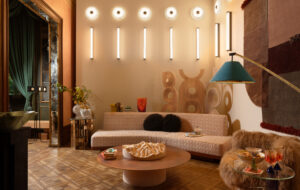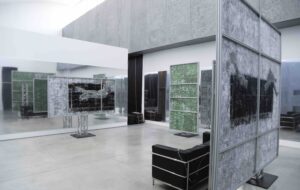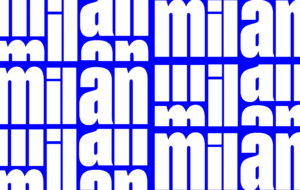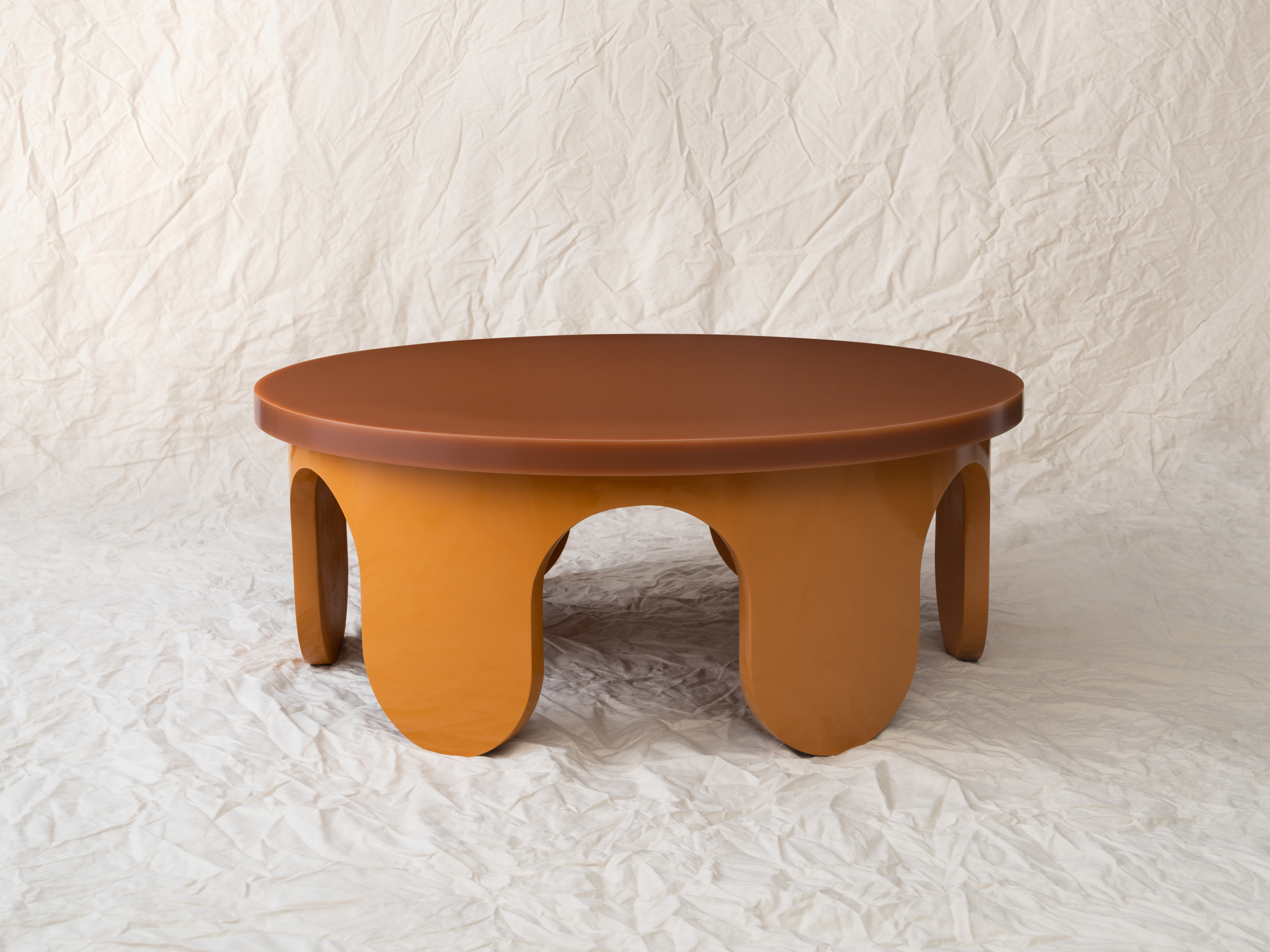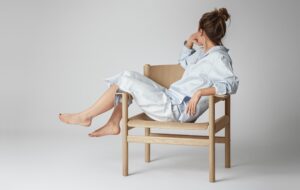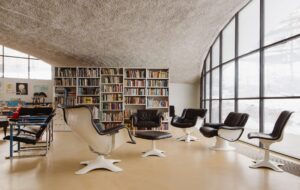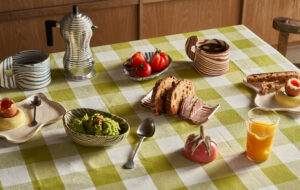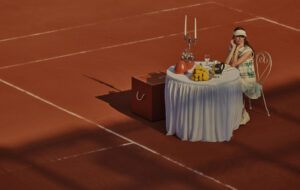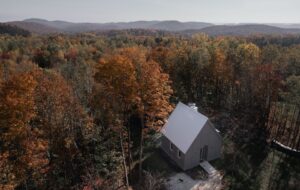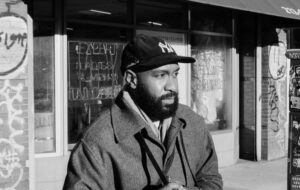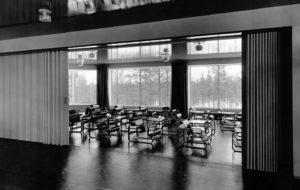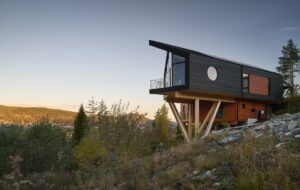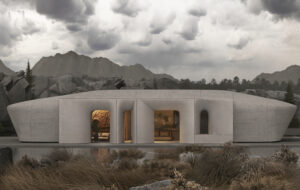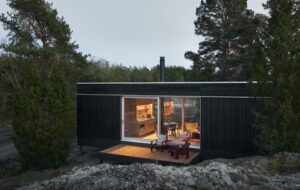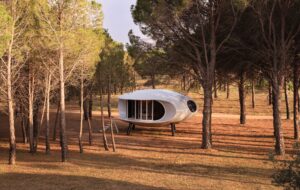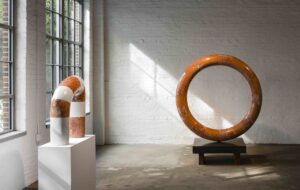

words Chris Hall
There are modern castles in Northern Ireland. Jonathan Olley, an award-winning photojournalist, was in Northern Ireland from 1998 to 2001 to photograph the British Army barracks, fortifications and police stations before they were due to be torn down as part of the peace process. He was given unprecedented, privileged access and is the first person officially to have taken pictures of these incredible buildings and structures.
The removal of watchtowers and ambuscades (covert places in which troops hide) along the border with the Republic was part of the Good Friday Agreement, signed in April 1998. An entire slice of history would have gone unrecorded had it not been for Olley’s resolve. However, with the peace process having stalled, a lot of these structures still stand.
As if mirroring the political invisibility of these buildings, these powerful images have been largely ignored by the British press while enjoying extensive coverage worldwide.
Olley was born in London in 1967 and studied fine art at the Chelsea School of Art before becoming a photographer. He has worked in Bosnia and has also travelled to Hiroshima and Nagasaki to complete an A-bomb project.
The images startlingly convey the elephants in the sitting room that are these modern-day castles. These structures have clearly bypassed all planning and conservation acts. The poet and critic Tom Paulin has written an essay in response to Olley’s photographs, in which he writes: “Mostly these enormous modern or postmodern fortresses – there is something intergalactic, cold and broken about them – mostly they’re uncompromising in their absolute affirmation of the utile, their refusal to even acknowledge any idea of the beautiful.”
Certainly there is little aesthetically pleasing about any of these “colonial monstrosities”, other than Olley’s gimlet eye for the surreality of the landscape.
Olley’s Modern Castles of Northern Ireland project is redolent of the work of the German photographers Bernd and Hilla Becher, which could broadly be called “industrial heritage” – pictures of silos, water towers, gas holders and coal mines that are about to become obsolete. As Paulin writes of one of Olley’s photographs: “One day the pines will grow tall and obscure these observation posts, as one day peace must replace conflict.”
icon spoke to Olley about his experience on the modern castles project.
How did this project come about?
I saw these buildings and was utterly freaked out by them. No one’s photographed them before except the IRA. I put a proposal to the British Army via a friend of a friend at British Army Headquarters Northern Ireland (HQNI) and he introduced me. I showed them my proposal and they went off into a little room leaving me in an anteroom and said “Fine”. I had a letter from the Queen saying I was allowed to do it – the RUC hated that. But it specifically said that I could only take exterior shots. The Army has never asked for any copies. They never expressed any interest in controlling the pictures.
How come these buildings are not generally known about?
They’re invisible to journalists, because you can’t talk to one. The army never gets to see the outside except from the air, and to the local Republicans they’re politically invisible. “How do you feel about the castle?” “What castle?” You know that they know, but they ignore it.
You had official clearance, but did you have problems on the ground?
I drove round on my own in a car. There were a few incidents, after which I knew I was being watched. I had permission to take the pictures between certain dates. But it didn’t always filter through. Ultimately you’d get some guy pointing a gun at you saying, “What the fuck are you doing?”, in the middle of nowhere, in the pouring rain up a hill.
What was the most frightening incident?
I found a fortress on a hill near Beleek. There was a PVCP [Permanent Vehicle Check Point] at the bottom. I was with an assistant and I left him to knock on the door – no answer. When I came back to my assistant Adam, he was surrounded by about eight squaddies, all with their guns raised at him. We’d driven round several times, looking for a road up, and they’d thought we were marking them out for an attack!
There are very few people in your pictures. Is that deliberate?
I thought that by excluding people I hoped that people could see beyond the situation, look a little bit deeper into what this was all about. You get distracted by details of what people are doing. I spent hours composing some of the pictures. I used a view camera, so that I could correct the perspective. Because I was in the same position for hours, I was really suspicious, although anyone really looking for trouble wouldn’t do it like that. I became like an unattended package in a Tube train – the longer you’re there the more suspicious you become.
The pictures are very unsettling…
Some of these structures were attacked with mortars and guns while I was there. It’s about saying we have control of the countryside – “we” being the IRA. They force the army into flying everywhere by helicopter.
You can display might but ultimately it’s too expensive to sustain and so you always reduce your troop numbers and you elongate your supply lines and that’s when the enemy can force you to retreat inside castles and forts.
What’s happening to these structures as part of the peace process?
Withdrawal isn’t happening that quickly because there continues to be a threat – the Real IRA, etc. Some structures are locked up.
In his essay, Tom Paulin refers to their ‘dead light’. Why use black and white photography?
In colour, the surreality wouldn’t have come across as well. I tended to photograph things when the weather was bad. It wasn’t conscious – what I was looking for was a lack of contrast. I wanted it as plain as possible, in fact almost boring. I wanted the subject to speak for itself.
Is there anything that you’re working on at the moment?
I’ve been photographing British sea defences and areas prone to flooding. But I’d really like to photograph the wall going up in Israel: the “security fence” along the borders with the West Bank and Gaza. [The conflict] is not about pictures of Palestinian children throwing rocks at Israeli tanks. The real thing is how people are split on the ground. I also have plans to publish the modern castles pictures in a book, and I’m on the look-out for sponsors.

